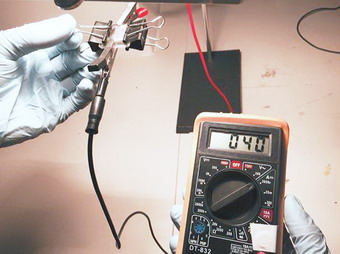How can a publically-funded curriculum development project, which produces a successful curriculum unit, sustain its use after the funding ends?
This is the question that faced us at the start of the third and final year of the Irresistible Project. For the first two years we worked with our Community of Learners (CoL) to develop a successful and popular curriculum that combined cutting edge scientific research, RRI, and an inquiry-based pedagogical approach that resulted in student-designed exhibits. As the end of the funding period approached, we asked ourselves how to sustain the curriculum after the project's completion.
Our curriculum unit focuses on developing RRI-based thinking by asking this driving question: "Under what conditions, if any, would we (the students) agree to have perovskite-based photovoltaic cells installed on the windows of our school?" In the curriculum, students visit the Weizmann Institute's outdoor science park, the Garden of Science, to learn about alternative energy; participate in an experiment on dye-sensitized solar cells; divide into groups to learn about RRI, the science and use of photovoltaic cells, and perovskite (which makes possible very high energy efficiencies, but also includes small amounts of lead, a poisonous substance); and create exhibits that address the driving question and are presented at their schools to their fellow students.
In considering how to develop a sustainable curriculum, we decided to "hand off" the unit to the Davidson Institute of Education (DIE), the "educational arm" of the Weizmann Institute, which implements a wide variety of programs in science and technology. We took the following steps: (1) meeting with the DIE's administration, (2) teaching the curriculum unit to the DIE's educational staff, (3) demonstrating how we implement the unit to a science class, (4) observing how the educational staff implements the unit to a science class, and providing feedback, and (5) giving the educational staff full responsibility to implement the unit alone.
As a result of these steps, the unit is now being run by a group that will continue to advertise, implement and maintain it after the Irresistible Project has ended. We have every reason to assume that the unit will be well-sustained, partly because we will be available to provide advice and assistance, when needed. In conclusion, we are very happy that the public funds used to develop the unit will gain "extra mileage" and we suggest that this consideration is a kind of RRI issue for science education, that every curriculum development project should take into account.











